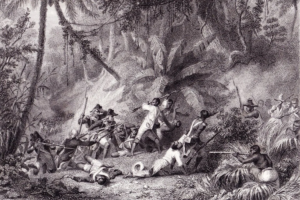“We have become so accustomed to seeing them on show that we often forget they once belonged to living people,” says Melanie Pitkin, a senior curator at the Chau Chak Wing Museum at the University of Sydney
As curators around the world grapple with the ethics of collecting human remains, one museum in Australia is taking action: Earlier this month, the Chau Chak Wing Museum at the University of Sydney removed fragments of mummified bodies from public display. Museum staffers also plan to rename the “Mummy Room” to more accurately and respectfully reflect mummification’s significance in ancient Egyptian culture.
The museum is home to the largest collection of ancient Egyptian artifacts in Australia—more than 5,000 items, including the mummified remains of humans and animals. When it opened in 2020, the Chau Chak Wing combined the 150-year-old collections of the university’s three previous museums.
Egyptologist Melanie Pitkin, who joined the Chau Chak Wing as a senior curatorof antiquities and archaeology in February 2022, is leading the charge to rethink how the museum displays and interprets its Egyptian collection.
At the beginning of April, Pitkin and other curators removed several sets of remains from display, including a mummified foot that had been donated in an old biscuit tin, reports the Art Newspaper’s Elizabeth Fortescue. They also removed the preserved feet and partial shins of a child, a partially bandaged adult head, and a mummified hand donated in a separate biscuit tin, per the Sydney Morning Herald’s Jordan Baker.
“For hundreds of years, body parts in museum collections have been treated as objects,” says Pitkin in a statement. “We have become so accustomed to seeing them on show that we often forget they once belonged to living people.”
For now, the remains are being kept in the museum’s “closely monitored collection store” while curators work to “implement better practices with Egyptian communities and authorities,” according to the statement. In the display, the museum replaced the unwrapped body parts with ancient Egyptian funerary portraits from coffin lids and masks. Curators are also exhibiting a painted portrait from the Roman era.
The completely wrapped, mummified bodies of individuals named Meruah and Horus are still on display, along with 3D visualizations based on CT scans of the remains. The CT scan data of another mummified body, called Mer-Neith-it-es, also remains on view.
The museum is also tweaking the language it uses to describe the bodies. Instead of “mummy,” it will use phrases like “Ancient Egyptian mummified human remains” and “Egyptian mummified remains,” per guidelines quoted by the Art Newspaper.
Moving forward, staffers will consult with Egyptian communities in Australia and Egypt about renaming the “Mummy Room.” The new name might be something along the lines of “The House for Eternity” or the “Eternity Room.”
“In renaming the room, we’d like to focus more on the transformation of the body into an eternal being, which is the whole point of mummification, rather than the body itself,” Pitkin says in the statement. “We also encourage visitors to critically reflect on the ethical complexities museums face when caring for human remains.”
“Mummy” is a colonial spin on mumiya, an Arabic word that translates to “bitumen,” a viscous, petroleum-based mixture. The term refers to how a mummified body looked after it was covered in resin, according to Pitkin. The word caught on during the “Egyptomania” of the 19th and 20th centuries, when Western explorers didn’t think twice about removing human remains from their final resting places and shipping them off to Europe, America and Australia.
In ancient Egypt, however, there was “no word for the mummification of the body,” Pitkin tells the Sydney Morning Herald. Over time, depictions of “mummies” in popular culture have turned a sacred ritual into a caricature.
“This kind of cultural stereotyping would elsewhere be recognized as a form of racism, but the ancient Egyptians are not here to object to the ways in which we depict them,” Jasmine Day, an Egyptologist and the author of The Mummy’s Curse: Mummymania in the English-Speaking World, tells the Sydney Morning Herald.
More broadly, Pitkin hopes the changes will inspire other museums to reconsider their own approach to displaying human remains. Without clear, specific international guidelines, museums are largely left to come up with their own, like the Chau Chak Wing did after 18 months of research, consultation and public surveys. (In February, the Smithsonian Institution—which holds human remains from more than 30,000 individuals—published a report from its Human Remains Task Force, which offered recommendations regarding the future of these holdings.)
“It’s a hot topic,” Pitkin tells the Art Newspaper. “The academic discourse has been going on for probably ten years, but for museums to implement changes, it’s been a really slow process.”
Around the world, curators and policymakers are also reconsidering their approaches to other types of artifacts. Earlier this year, for example, Harvard University removed a book binding made of human skin from its library, while the Field Museum in Chicago covered some of its Native American artifacts.
In the United States, many institutions hold the remains of Native American people in their collections, even though the federal Native American Graves Protection and Repatriation Act calls for their repatriation or transfer. Originally enacted in 1990, the law was recently updated in a bid to speed up the return of Native American human remains, funerary objects and sacred items.
The changes are “long overdue” and will strengthen federal officials’ ability to “enforce the law and help tribes in the return of ancestors and sacred cultural objects,” said Bryan Newland, assistant secretary for Indian affairs, in a December 2023 statement announcing the updated rules.
Get the latest stories in your inbox every weekday.




